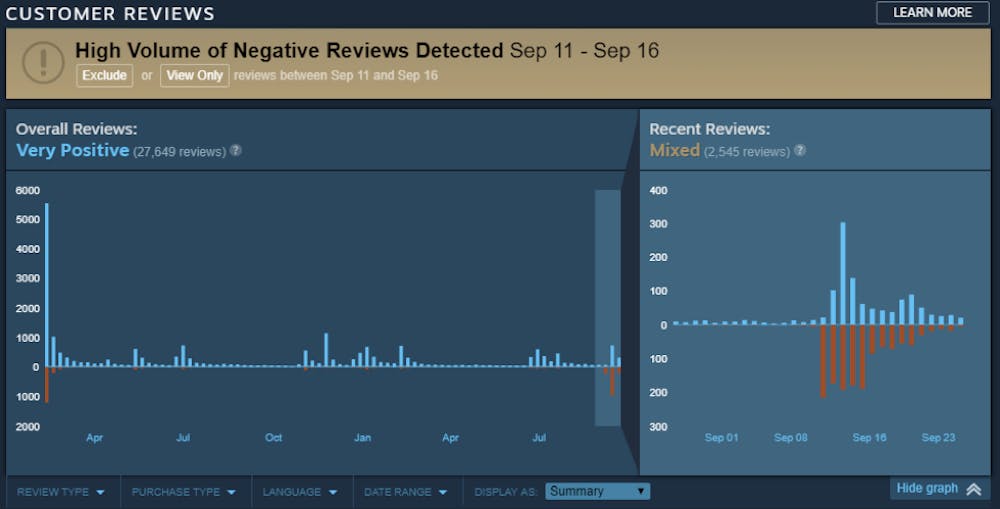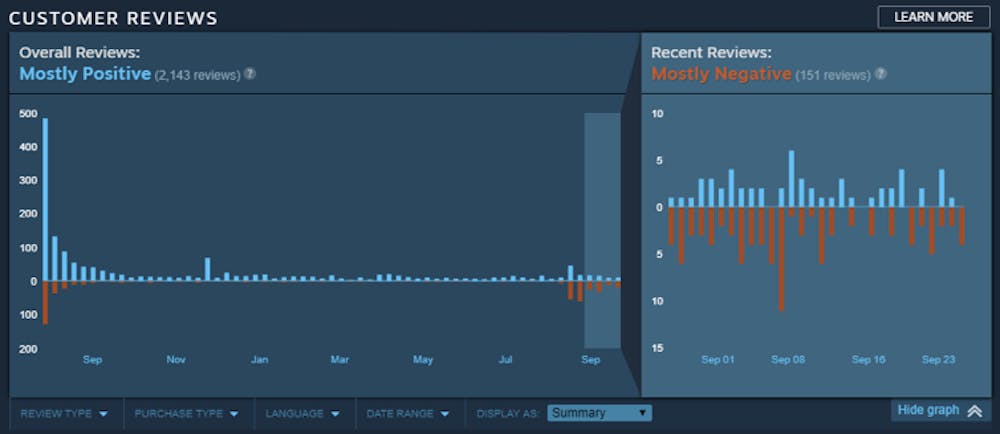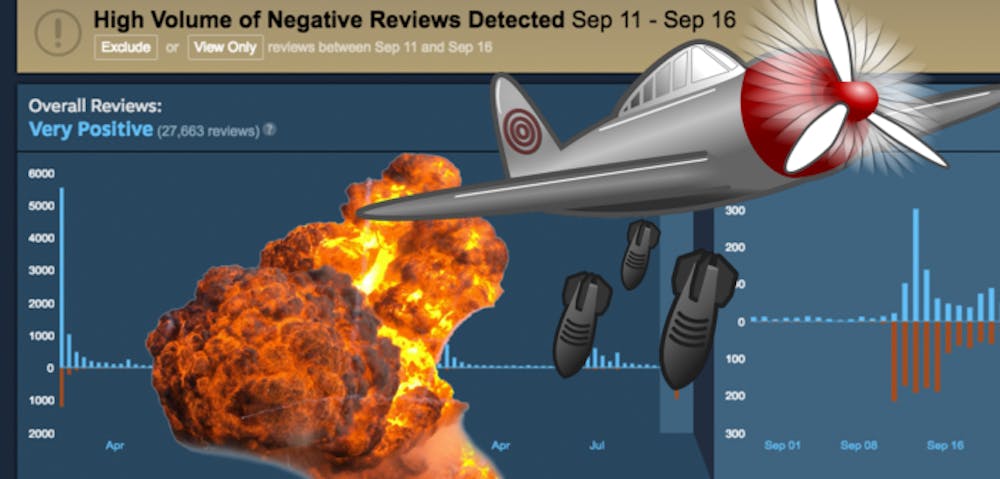The internet is one of the most valuable, yet dangerous tools. It goes without saying that the internet can truly be magical sometimes. Where else can a person find detailed facts and backstories for random background characters in Star Wars? Or, I don’t know, a mod for Super Mario 64 where your head is a fidget spinner. The good stuff we all love. The internet also has the ability to be completely twisted and vengeful. When you piss off the internet, it’s not just like knocking down a hornet’s nest. It’s like knocking down a hornet’s nest that was secretly a giant mecha being piloted by hornets, and they’ve got their sights on you. This is especially true when dealing with particularly rabid sub-subcultures of the internet. For example, just look at PewDiePie fans.

Image from Kotaku Australia
After a recent controversy involving PewDiePie saying the one racial slur you really shouldn’t say under any circumstance ever, Campo Santo, developer of Firewatch, issued a DMCA claim against the Youtuber’s videos of their game. In response, Pewds’s fans attacked Campo Santo on Twitter and in a place where they could really make an impact, on the reviews for their game Firewatch.
Negative reviews rained down on Firewatch, taking a game that was sitting at “very positive” since launch to a “mixed” within recent reviews. Many reviews mention this incident being their main reason for giving a thumbs down, which adds to the suspicion. There’s also been a few cases of users buying the game, reviewing it at 0.0 hours, then refunding it. The internet hate machine unleashed fire and fury on Campo Santo and with the way Steam reviews were set up there was no way to fight it.
The internet troll’s ultimate weapon
This is called “review bombing,” and is a problem that exists on many review aggregates, not just Steam. Any site that has the option to allow users to submit reviews could be bombarded with reviews from people who’ve never even touched the product. Some sites, like Amazon, have set up ways to scan through reviews and remove ones that were fraudulent or from people who weren’t verified purchasers. Other sites, like IMDB, really don’t care much about review bombing because critic reviews are so close by that the audience shouldn’t really worry about user reviews. Steam however, purely has reviews done by its users and Valve-approved curators, but the curation system is so underwhelming most people probably don’t even notice it. The question now is: how can Steam fight against review bombing when its system is setup to give the consumer all the power?
Well, Valve gave their answer. In a post on their community blog, UI developer Alden Kroll outlined their plan to allow people to see through the review bombs. What was their genius plan? Graphs, of course! Previously, you simply had the number of positive and negative reviews to go off of, along with a recent and all-time average. Now, users are given all the graphs they’d ever want to decipher what the reviews mean, along with a notification of suspicious activity within recent reviews. Below is an image of Firewatch’s current review page.

Image from Steam
This graph essentially gives you all the information you’d need to determine what happened with the recent reviews. After that, it’s up to the user to determine why this review bombing happened and then make their purchase based on this new information. Alternatively, the user ignores the reviews and makes a horrible purchasing decision because they heard “it’s from the guy who made Mega Man!” Learn from my mighty mistakes, always do research before you buy a game.
Dr. Valvelove or: how I learned to stop worrying and love the review bomb
As a consumer advocate, I’m all for Valve’s decision here. Any time a consumer can get more information about a product before forking over their hard-earned shekels, the better it is for the games industry. Consumers deserve to know if a game is worth purchasing, and if they should support a developer who they may not agree with on a personal level. I also don’t think review bombing is necessarily a thing that should be removed completely. In the short term, it’s a tool of protest against developers who do scummy things post-launch after most reviews have already been submitted; like when ARK: Survival Evolved developer added an expansion pack for a game that wasn’t officially released yet to siphon more money out of consumers. It’s also a way for the playerbase to show their distaste for the direction a game is going in, like with We Happy Few after it was bought by the lying, greedy, slug-people at Gearbox Interactive just this past month, where it doubled in price and got a bunch of new, expensive DLC. Keeping review bombing, but also keeping it under control, is the best perfect balance to give the consumer as much power as possible in their purchasing decision, and that’s just lovely. Additionally, for developers and fans worried about reduced sales for review bombed games, Steam Spy reports that “there is no correlation between review bombing titles released a while ago and decline in sales.”
Will Valve’s graphs put an end to review bombing? In all honesty, there’s about a zero percent chance of it stopping the internet from review bombing for reasons outside the game itself. The internet will be the internet; the wonderfully weird and kind of terrifying beast that it is. History shows that trying to prevent the internet from doing what it wants only ends up with your ugly pictures being plastered all over the place, just ask Beyonce. Valve’s approach to the problem is a solution that’s perfectly sensible and doesn’t treat the consumer like a complete idiot. Also, statistics are fun! If it’s one thing nerds love more than games, it’s graphs. Truly this solution is a win-win for everyone involved. Here’s my new favorite graph: the one that shows what happens when Gearbox steps in and ruins a genuinely promising early access game with triple-A shenanigans and a $150 collector’s edition for a game that’s not officially released. It’s fun for the whole family!

Image from Steam’s We Happy Few review page
Sources: YouTube, Twitter, Steam’s Community Blog, CinemaBlend, Polygon, PC Gamer, Buzzfeed
Images: Steam, Kotaku Australia
For more entertainment related content, visit us at Byte Bsu!



















